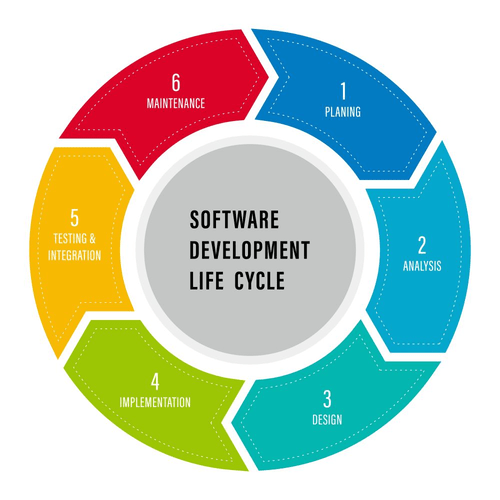Content
Migrating to the cloud can introduce complexity into IT operations. Managing, integrating, and operating in the cloud may require that the agency’s existing IT staff learn a new model. The users should be aware of the migration procedure that can save them from challenges, wasting time, and increasing risks. It requires the right resources and efforts that the users must consider. Losing data while transferring it over to the cloud is the biggest concern for organizations. It is essential to ensure that the data backup is done smoothly before the files are moved.
In the digitalized era, cloud migration unlocks a host of benefits that can give a business a competitive edge. In fact, the benefits of cloud migration enable firms to sustain in a competitive setting. But it is necessary to remember that cloud migration comes with its own flaws and risks. However, it is costlier and more complex as every provider offers various tools and services for cloud management, but it provides freedom also. As per McAfee’s Cloud Adoption and Risk Report, 78% of companies are presently utilizing both Azure and AWS for avoiding basic risks in cloud migration.
Use this method to ask yourself some helpful questions about your cloud migration. While it may be possible to re-architect the application during the migration stage if the application is not mission-critical, It’s generally best to do this later in the project. It’s important to remember that refactoring can take some time and requires expertise. These are some of the typical scenarios that can benefit from cloud migration. Cloud computing brings a new level of life and innovation to your company’s business practice and application architecture.

Experiment with these options to get insights to help in your cloud migration. Cloud environments experience–at a high level–the same threats as traditional data center environments; the threat picture is the same. That is, cloud computing runs software, software has vulnerabilities, and adversaries try to exploit those vulnerabilities. As a result, consumers must understand the division of responsibilities and trust that the CSP meets their responsibilities.
Avoiding This Risk
Databases that require a consistent view create unpredictable issues. Also, transactional production servers that continuously generate data are hard to manage. After data migration, the system must track and synchronize new changes to the production application. Furthermore, there may be security concerns with storing production data in the public cloud. It leads to a lack of control over multiple data repositories across a hybrid IT landscape.
- That’s why it’s highly recommended to start the process by defining all the data scope for migration at the very beginning.
- AWS + Microsoft Azure is a popular multicloud combination today.
- Just 27% of respondents had confidence in their capacity of identifying every cloud security alert.
- For this, companies look for certified cloud professionals who could help them in cloud migration and management.
The icing on the cake is that you can enjoy some of the best cloud security features. The low level of infrastructure complexity will enable you to offer top-notch services for the clients. In the technology-driven era, the benefits of cloud migration can positively influence the survival and sustainability of business undertakings. Public cloud computing worries many businesses when it comes to transferring their data and applications. With public cloud solutions like AWS, Google Cloud, and Azure, you lose complete control. Even managing your security processes is impossible without an on-premises infrastructure.
Top Five Cloud Migration Risks To Avoid
There are various fees involved in cloud computing, and every provider is going to offer a different range of services and prices. If you don’t do the required calculations to figure out exactly what it is you need, you may end up wasting a great deal of money. Whenever moving data to be stored in a new location, there is always a risk of it being lost. Be it due to various technical issues or due to human error, you may find some of your files to be missing, incomplete, or corrupt.
The lack of a proper understanding of the cloud service provider’s storage model can also lead to data loss. Thus numerous threats arise in the cloud computing environment that can compromise your data. Visibility in the public cloud is one of the major risks in migrating to the cloud. In case you depend on your on-premise data centers, take complete control over your resources incorporating data centers, networks, and physical hosts. Extra latency is one of the underrated risks in cloud migration. This can happen when you access databases, apps, and services in the cloud.
Hence, one must take the advantage of cloud migration but work accordingly to manage the expenses and avoid the issues. There are different advantages and disadvantages of cloud migration strategies. Hence, companies need to know which one to follow and what will be the right one.
Companies can save a lot by cloud migration, particularly in the long run. In comparison with on-premise hardware, you have no upfront investment with the cloud. Users must specify configurations during cloud migration, and the wrong configurations leave your company vulnerable.
Free Ebook: Recommended Rfp Process For Selecting Cloud Provider
An overview of the three kinds of cloud computing models is an excellent place to start in the decision making process. It will be the responsibility of your IT team to ensure that everything runs smoothly and threats are kept at bay. First of all, check your infrastructure for vulnerabilities and conduct a cloud readiness assessment.

However, when multiple cloud service providers work for you, they will all charge their fees, and cumulative costs will be very high. When using cloud migration, you are buying every facility like data transfer, storage services, etc. N-iX is an Eastern European software development service company that helps businesses across the globe expand their engineering capabilities and develop successful software products. Popular cloud providers like Azure and AWS provide security as a service. They ensure that your physical assets are protected from unauthorized access. The majority of cloud vendors have strong portfolios of compliance offerings including ITAR, DISA, HIPAA, CJIS, FIPS, etc.
Ensure that your CSP has data backup, restoration, and fallover options. It is a good idea to have your data backed up by more than one cloud provider, so you won’t have to worry about unexpected downtime by a particular provider. In addition, it is a good idea to back up all your important data on a disk as https://globalcloudteam.com/ well. Cloud migration requires careful planning because it is vulnerable to several attacks. During migration, sensitive data is transferred, making it vulnerable to attack. In addition, at various stages of a migration project, attackers can gain access to unsecured dev, test or production environments.
Make sure your team fully understands the chain of providers being used. Assign team members duties such as ensuring that every provider utilized is staying up to date with patches. Instead of manually performing processes, like database backups, automate them. Take your time setting up your cloud account and ensure that users have appropriate privileges. Never allow shared accounts and remember to give the least privilege practical to each user.
Risks Associated With Data Migration And How To Mitigate Them
Data-rich applications are also dependent on multiple elements and environments. These issues increase the risk of the new system being unable to fulfill business needs for end users. The problem is, the majority of companies cannot boast the presence of qualified security experts that will assure the full security of your organization’s migration to the cloud. As a consequence, vital info can leak due to the most trivial reasons on the client’s side . If you’re interested in end-to-end cloud migration support and expertise, check out our professional IT services today.
A good cloud service migration team is very important as this reduces the various risks of cloud migration. Our cloud services provide various cloud migration facilities and protection for your data. We use agile methodology and an end-to-end CRM implementation to facilitate data migration. Creating and sticking to a consistent security strategy is also a relevant step for dealing with most cloud migration problems. Other factors like natural calamities, such as earthquakes or floods, can also cause permanent loss of customer data and information.
It helps in reaching successful transformation, capturing value, accelerating innovation, and winning scaling. Prioritize applications that are not business-critical to ensure your first migrations are successful. When you gain more experience, migrate your business-critical apps. With cloud Cloud data migration migration services, you can save money, especially over the long term. Another important money-saving arrangement in the case of cloud migration is that no up-front investments are involved. Backing up your data is another important aspect to keep in mind when migrating to the cloud.
Cloud Migration Risks
This approach enables firms to learn from the trial and error of the users. The fundamental objective of cloud migration is hosting data and applications in an effective Information Technology environment. It enables business undertakings to have better elasticity and flexibility. In addition to this, one of the key benefits of migrating to the cloud is better collaboration among staff members.
Switching from legacy applications to new applications that support the cloud or are provided by cloud vendors. Reduce unauthorized access and accountability by personally restricting user access. Our cloud experts will speed up cloud deployment, and make your business more efficient.
Key Cloud Migration Risks And Ways To Avoid Them
Hence, it is essential to form the right cloud migration strategies to avoid unnecessary delays. The users need to have rock-solid and proper migration strategies to save money and avoid system failure. Hybrid cloud is the one that connects private and public clouds ensuring effectiveness.
When choosing a cloud provider, look for one with a strong compliance portfolio. At the same time, you’ll need experienced DevOps engineers and a security team that can take action to ensure your data’s long-term security in the cloud. Many companies adopt a multi-cloud approach, deploying different workloads to different cloud providers depending on the cost and suitability of their technical solution. Thanks to it, you can automatically manage and provision computers and networks (physical and/or virtual) through scripts instead of manually configuring them. It’s important not to rush, constantly check the stability of the chosen network connection, and guarantee the overall process security.
